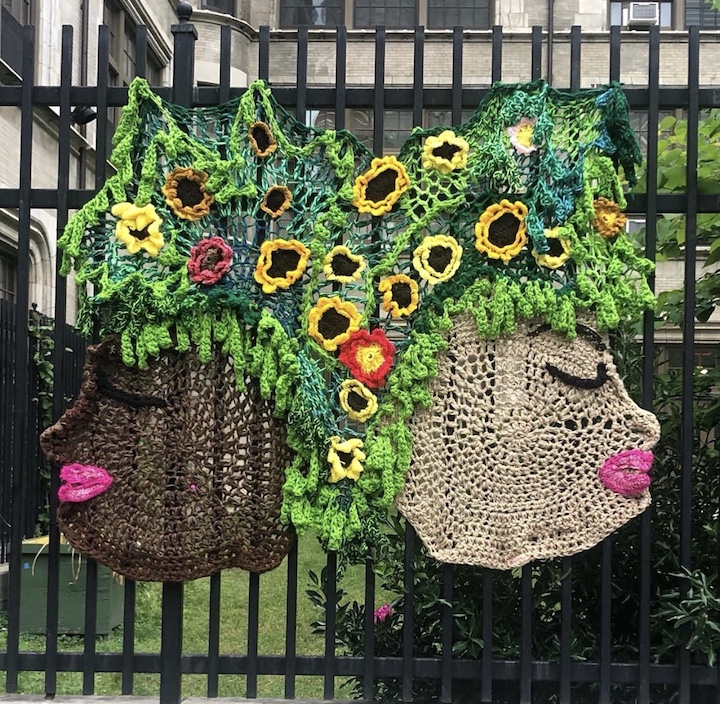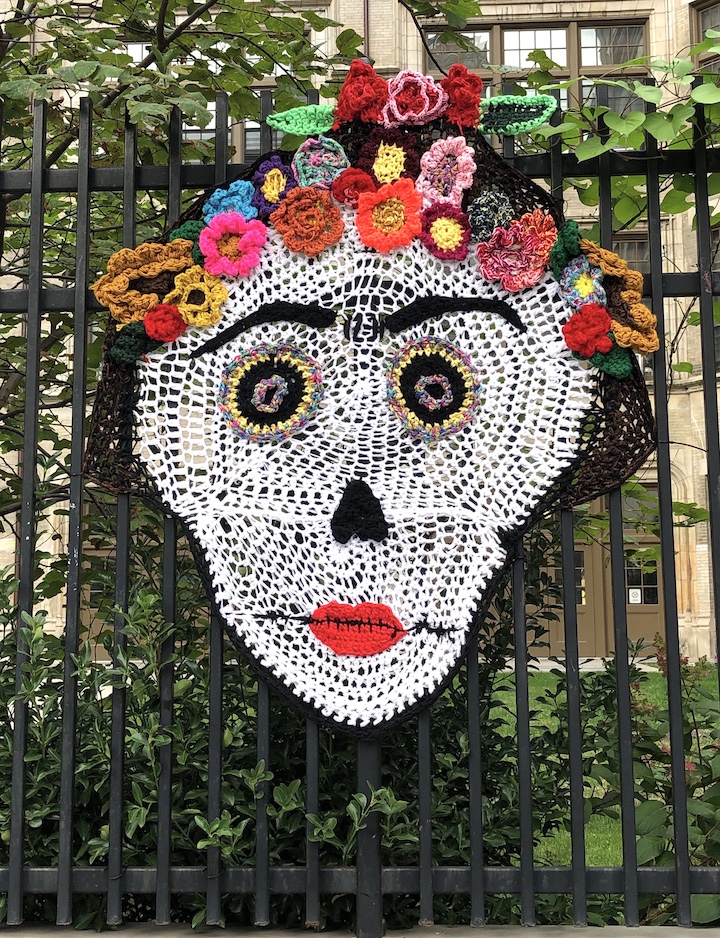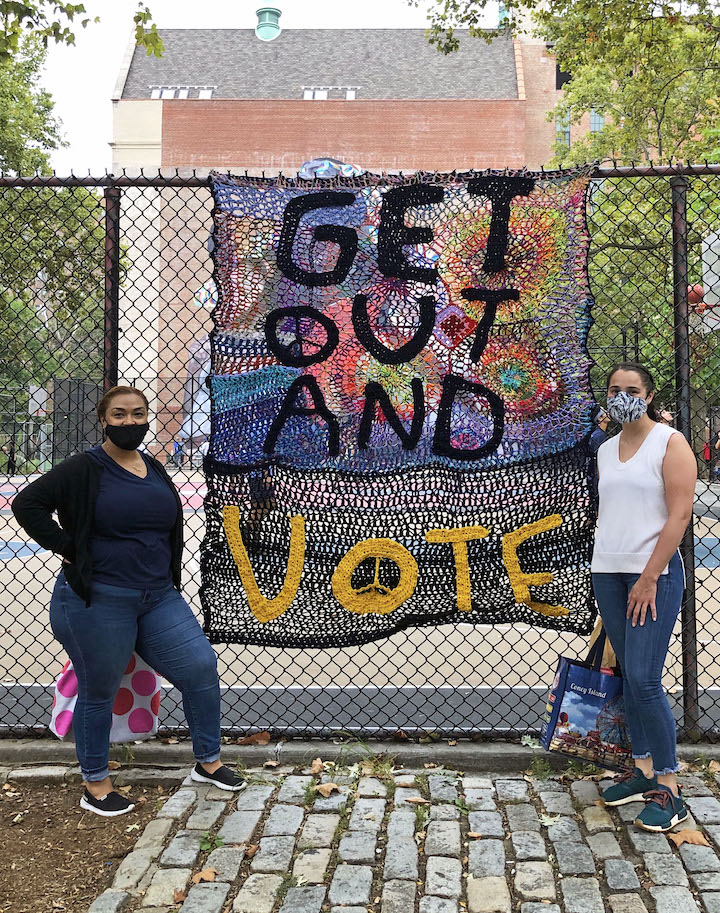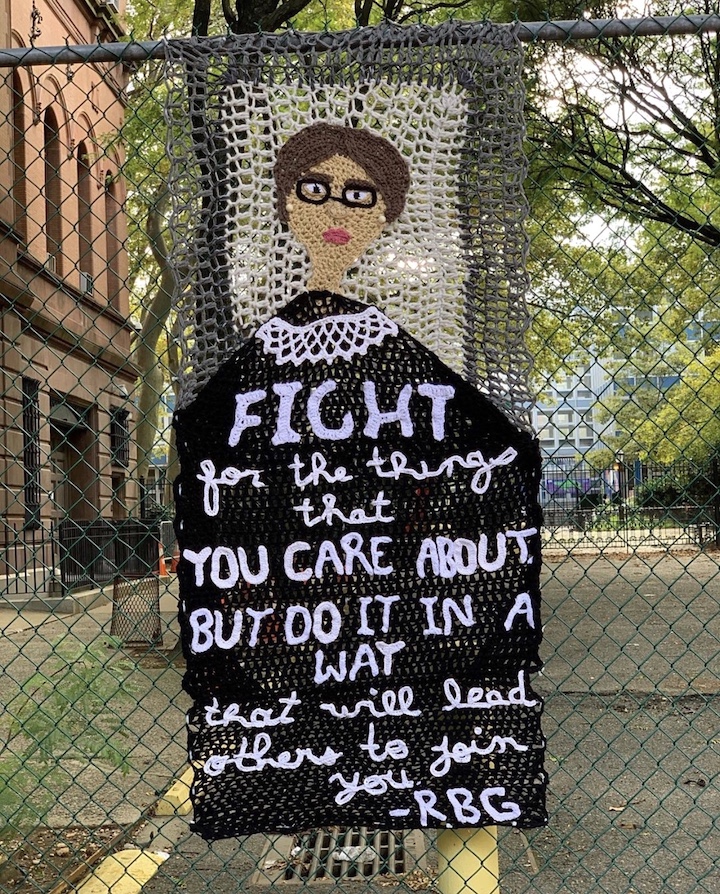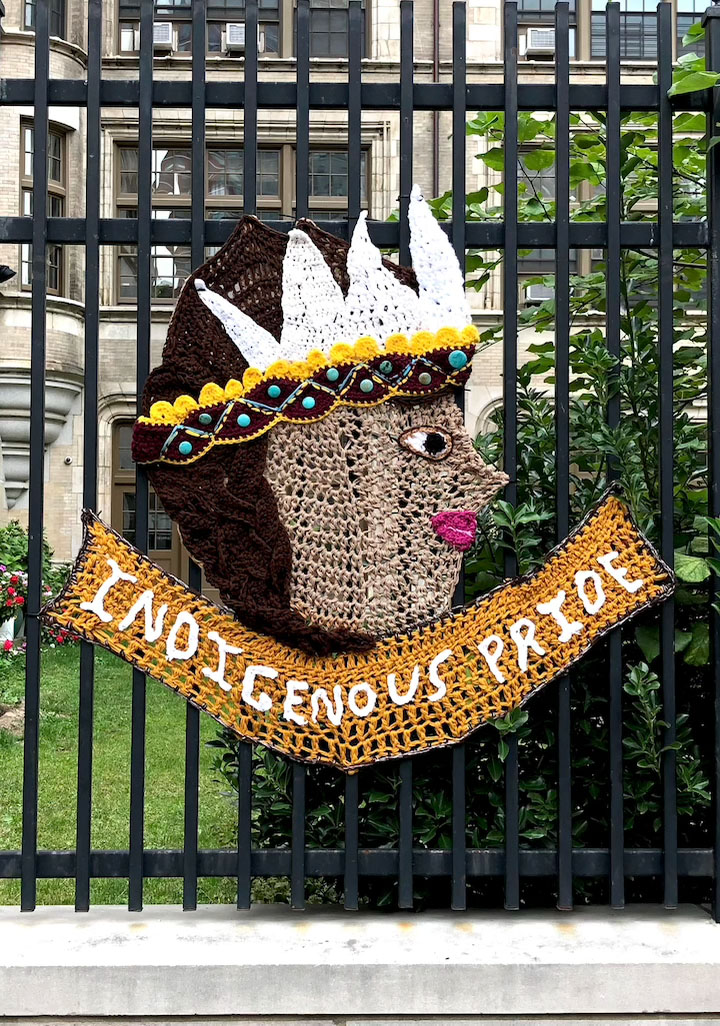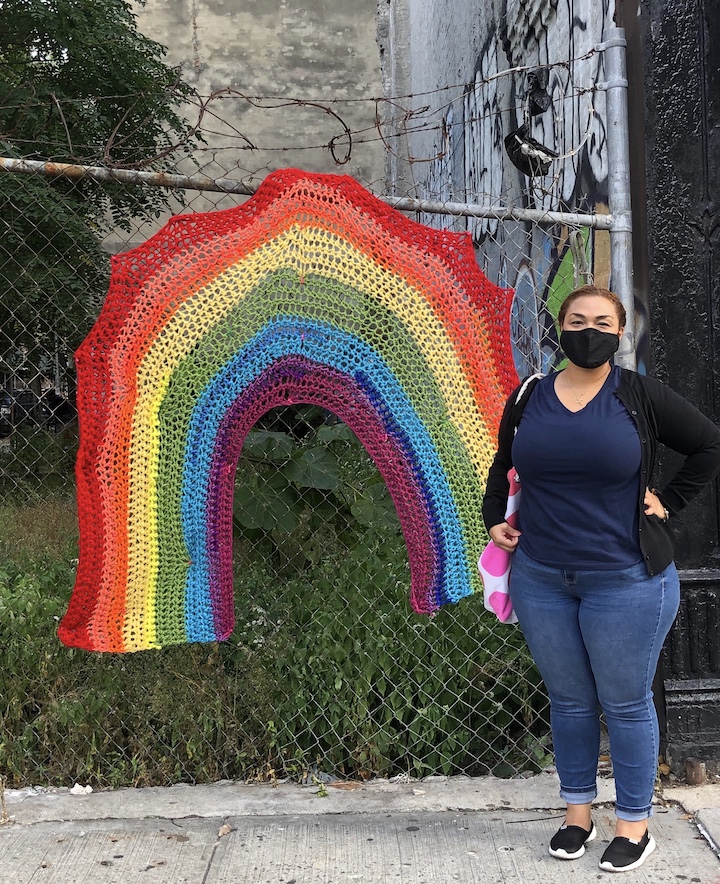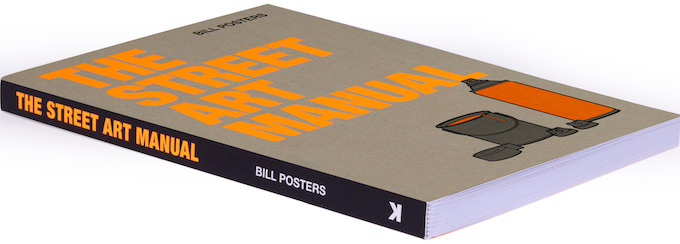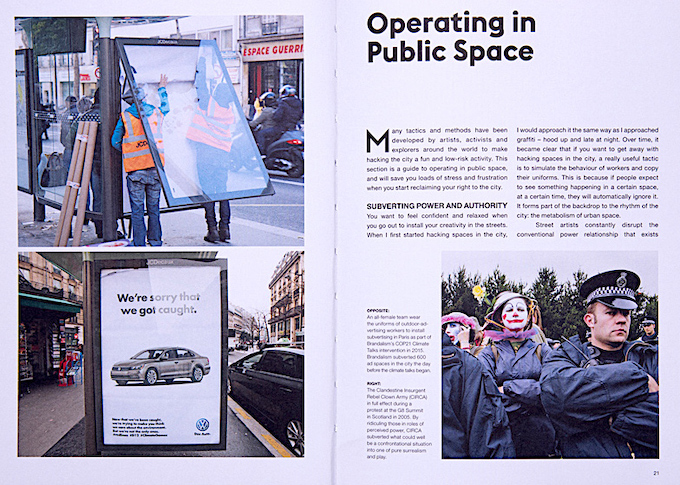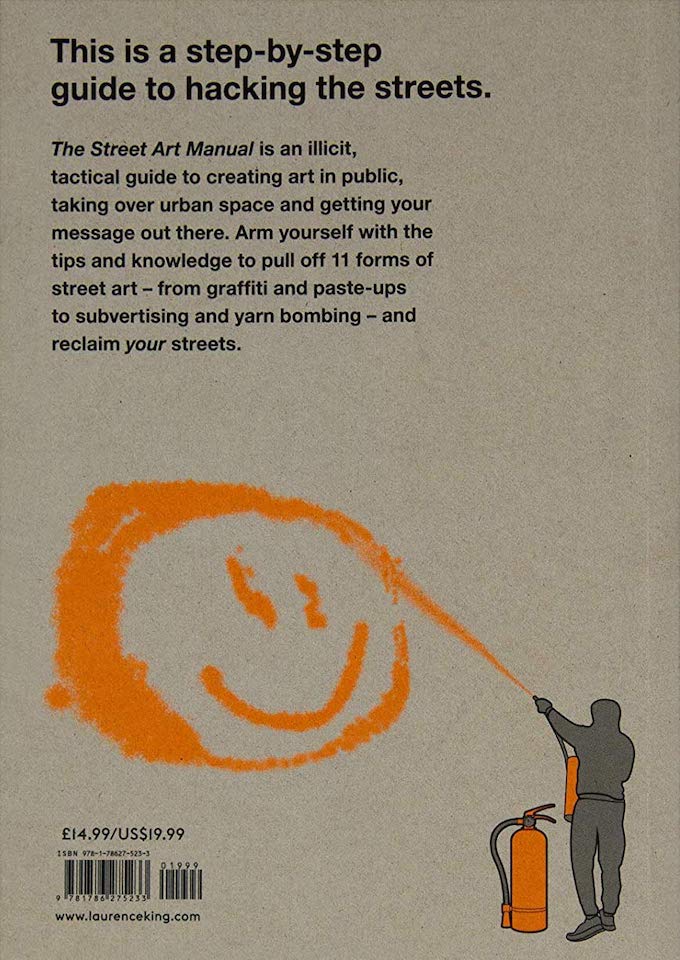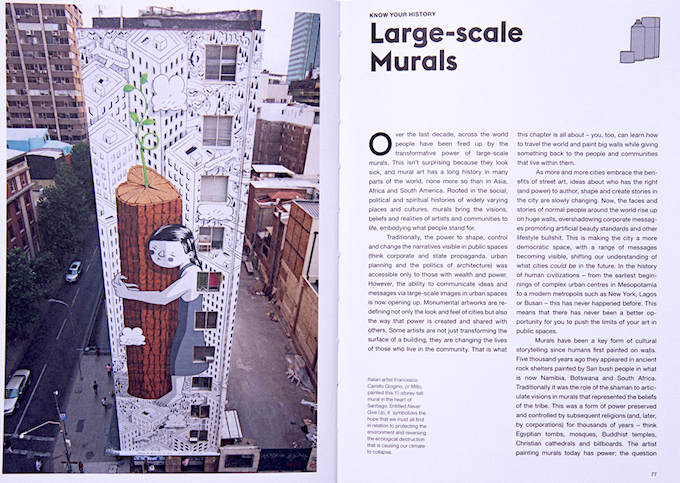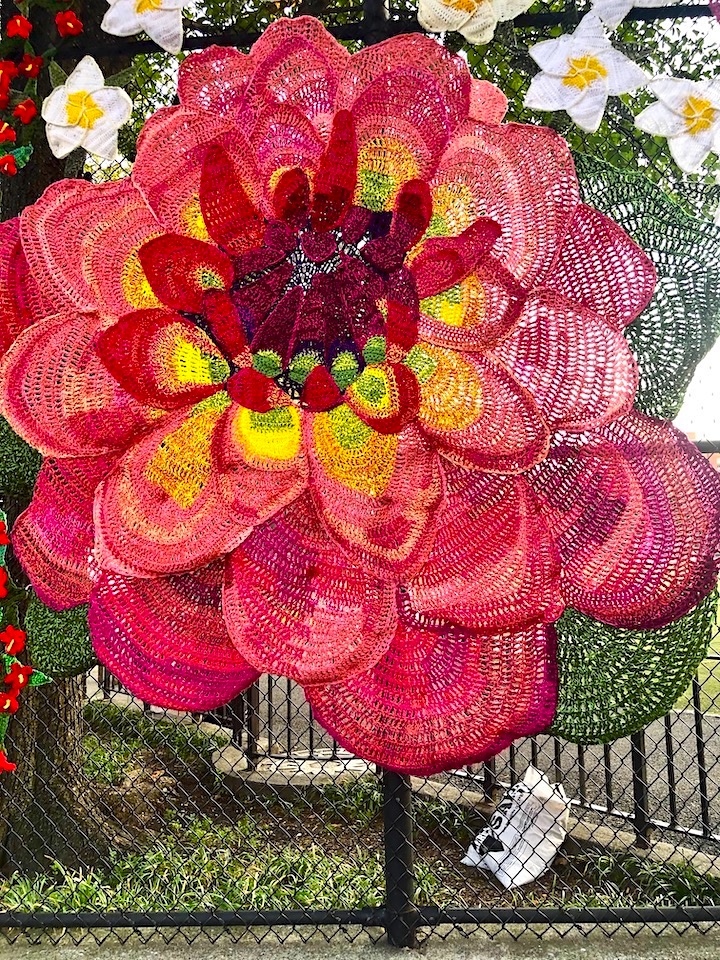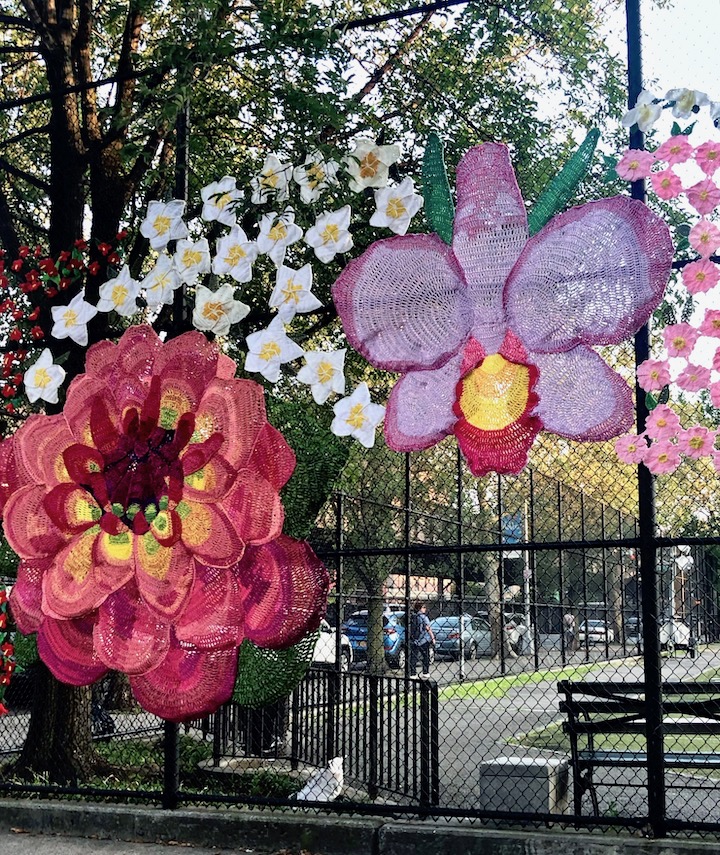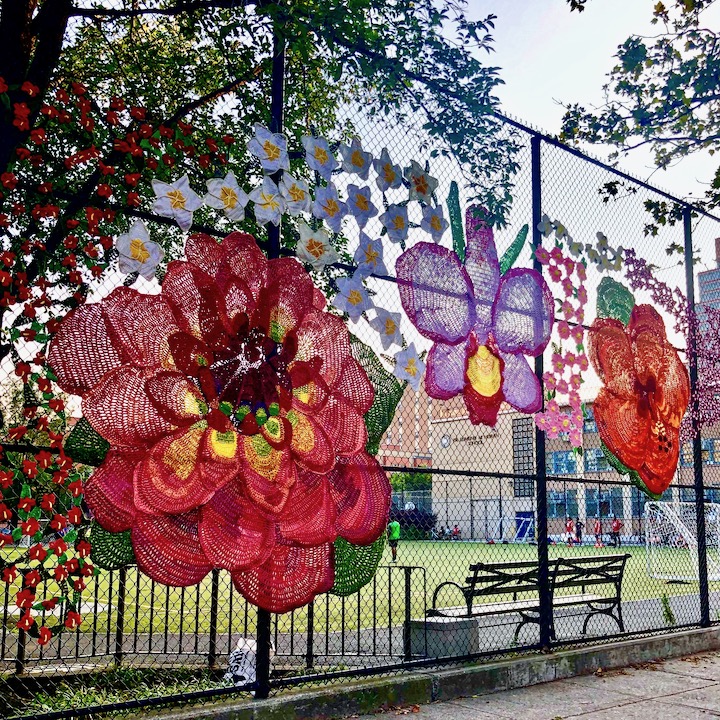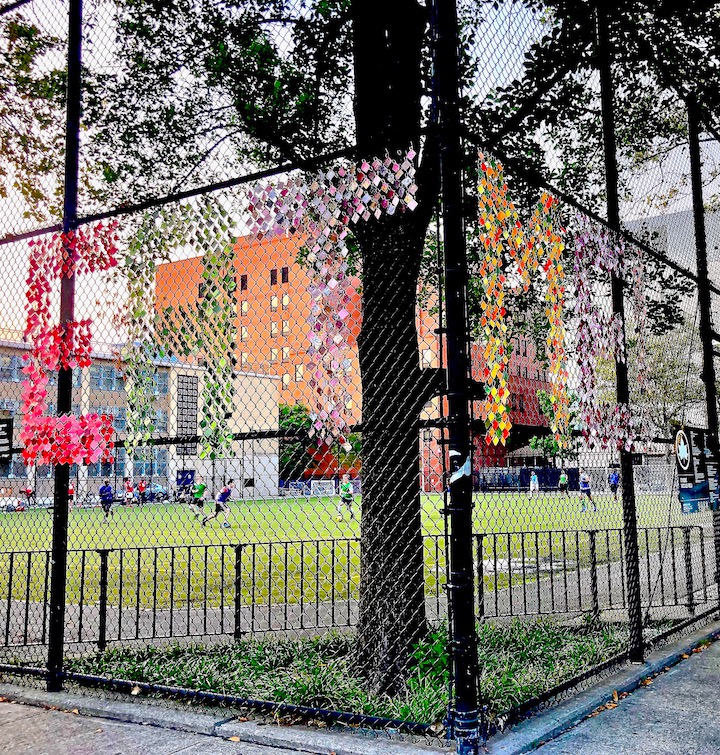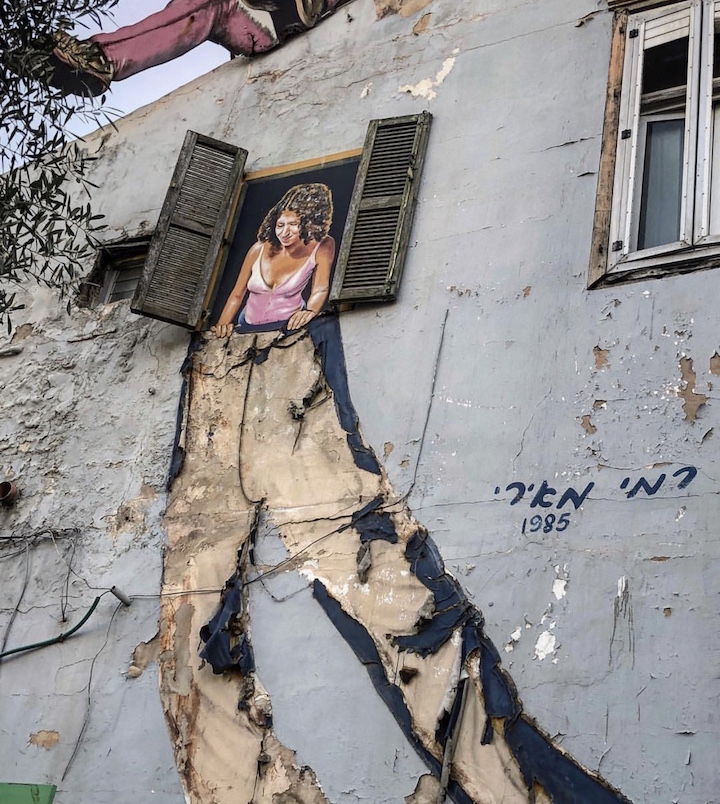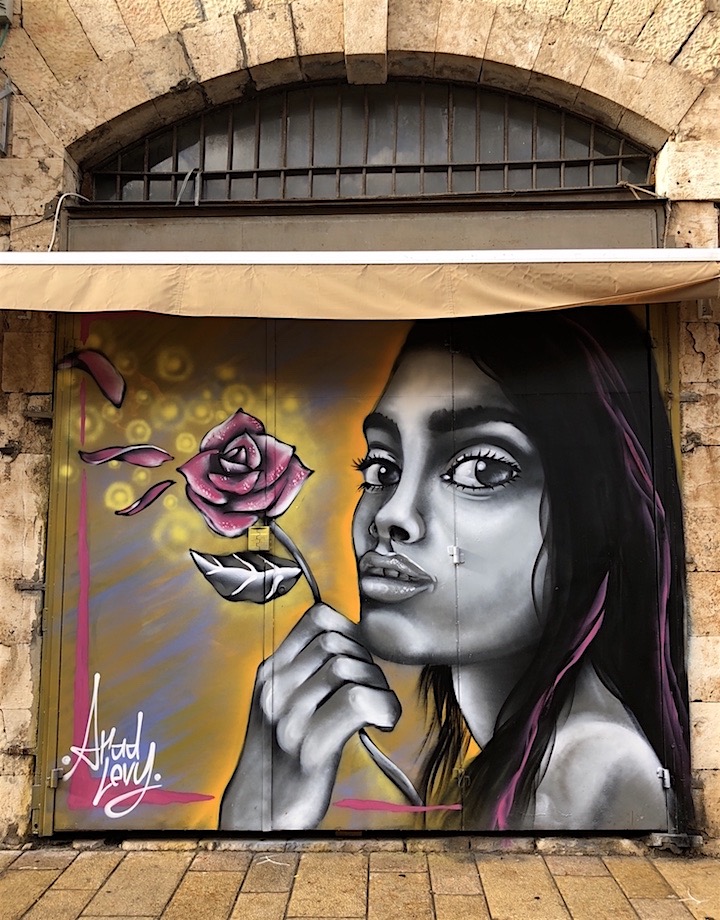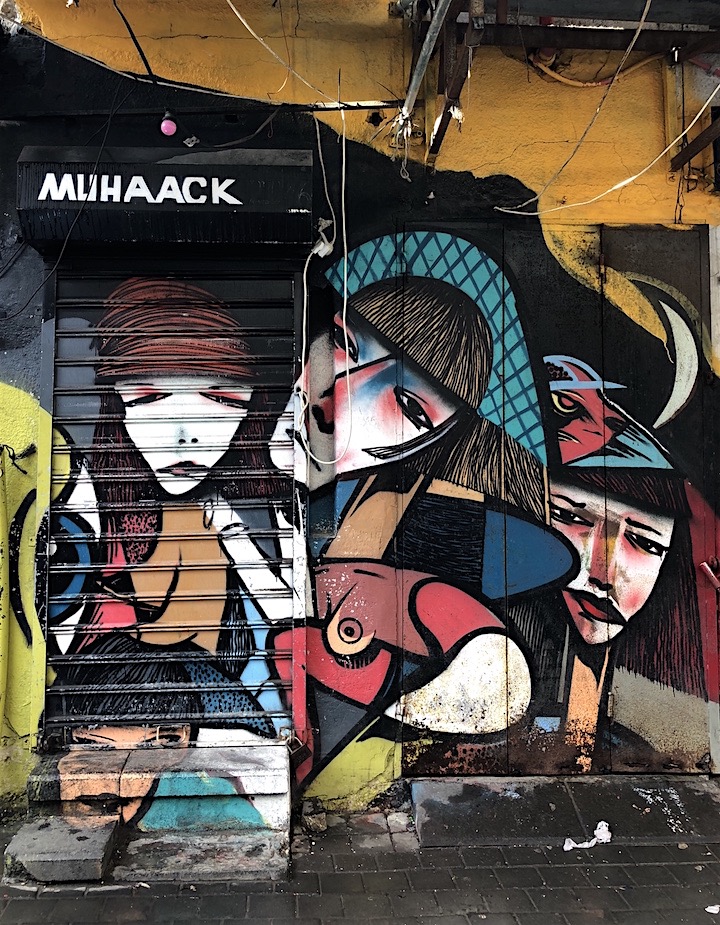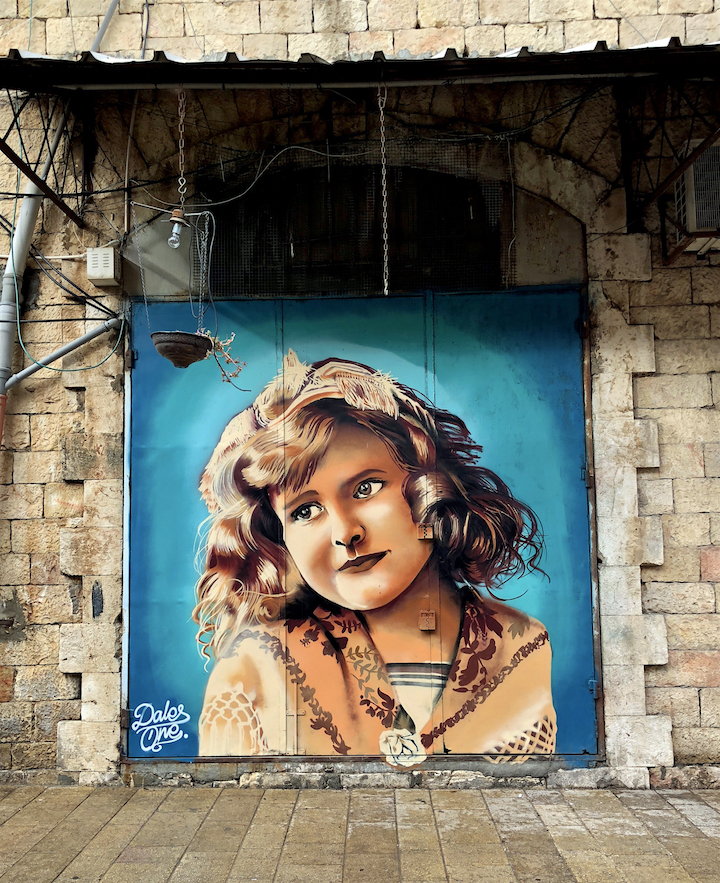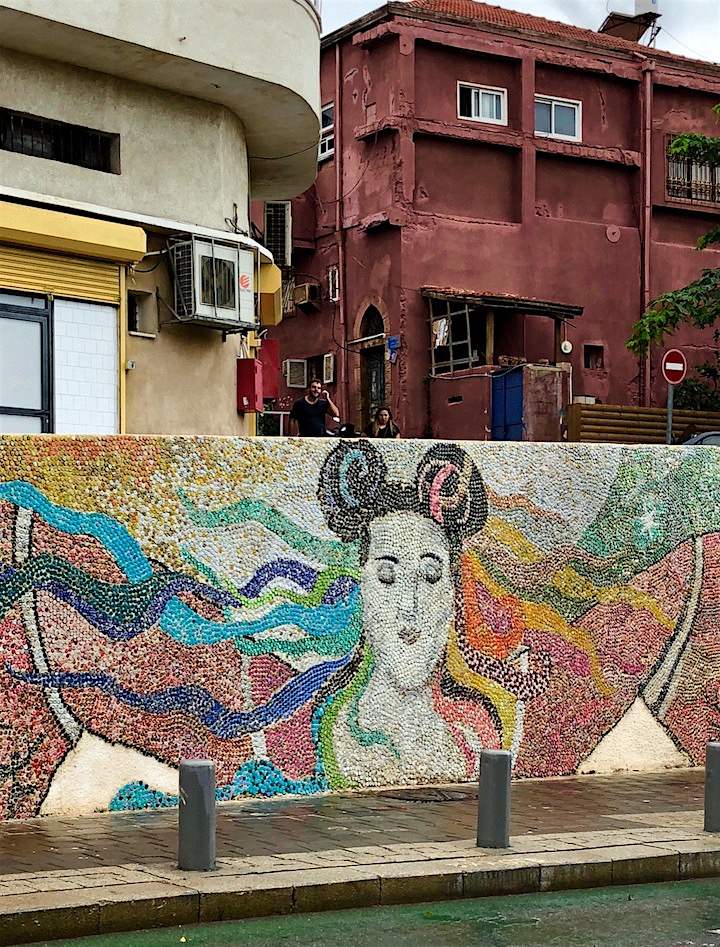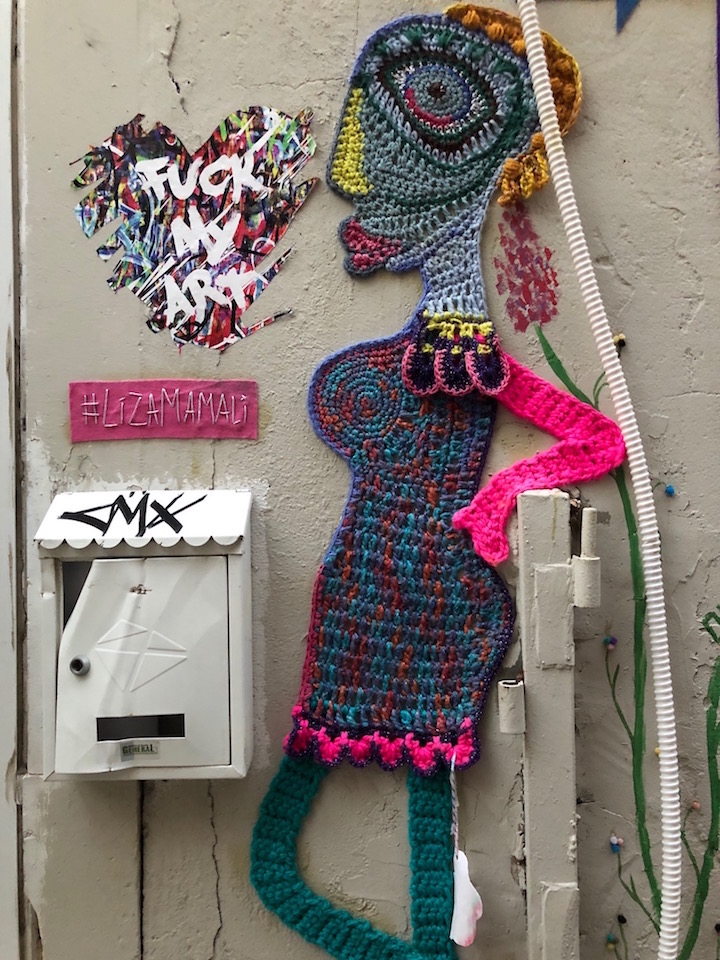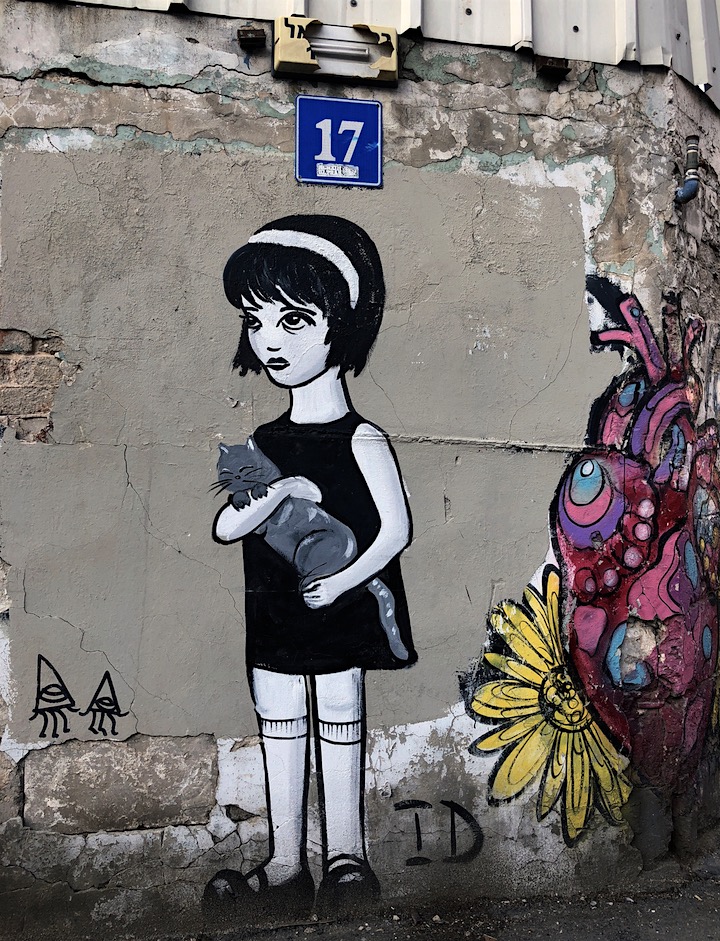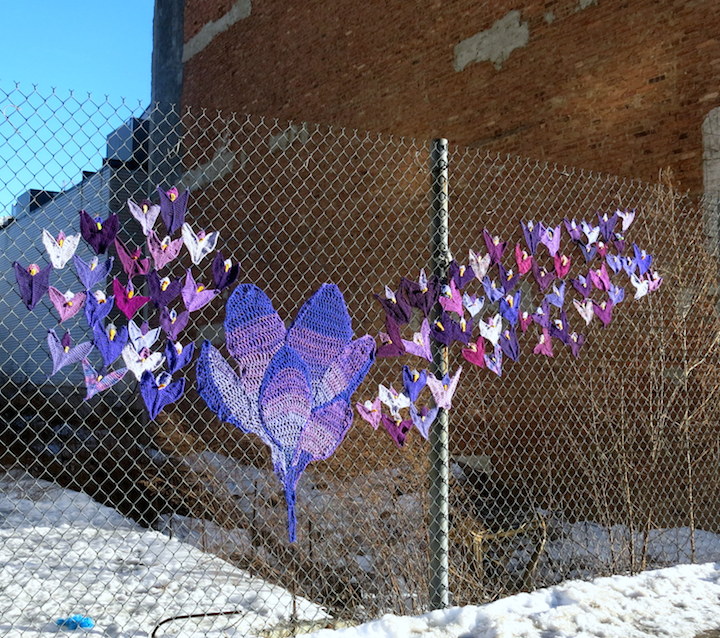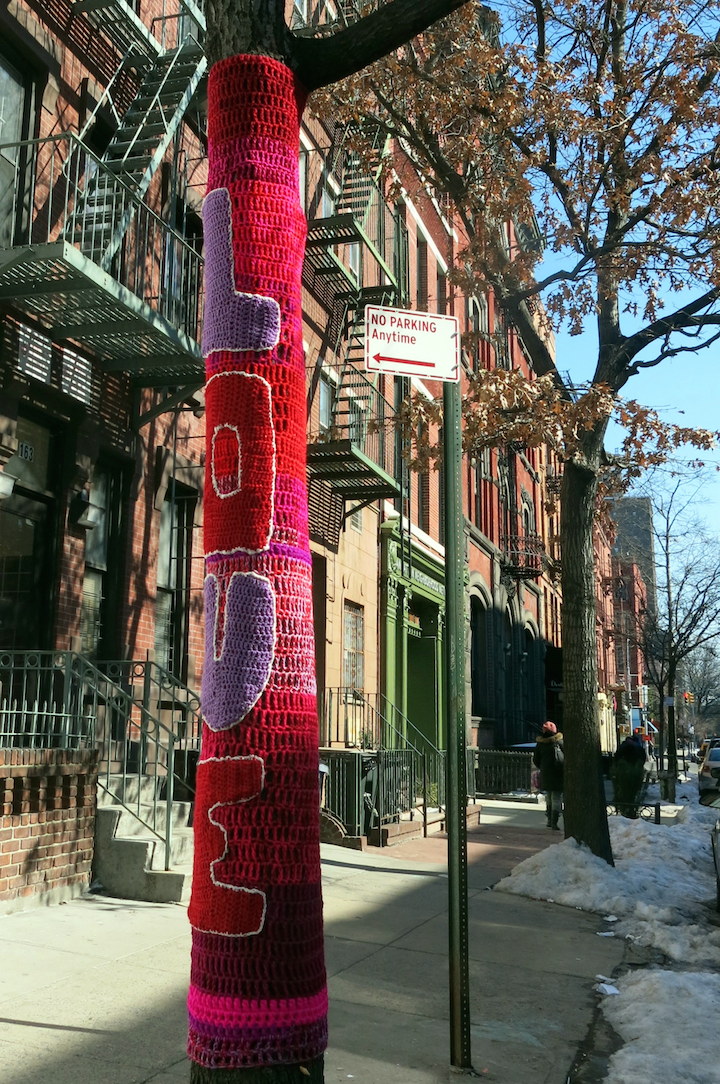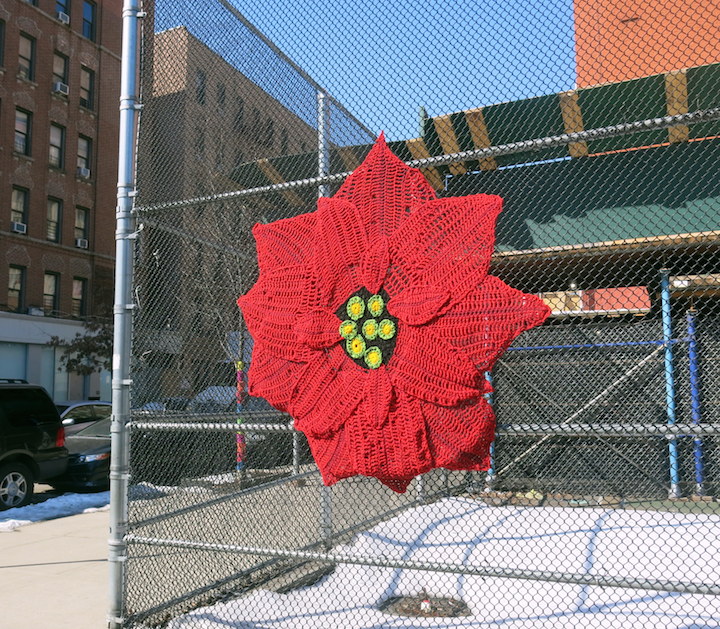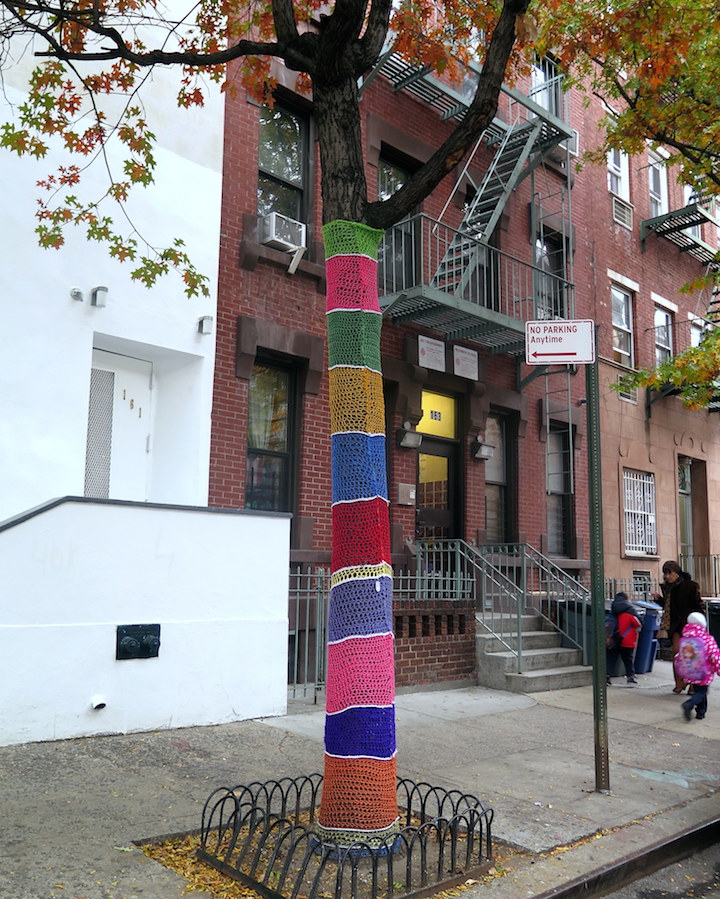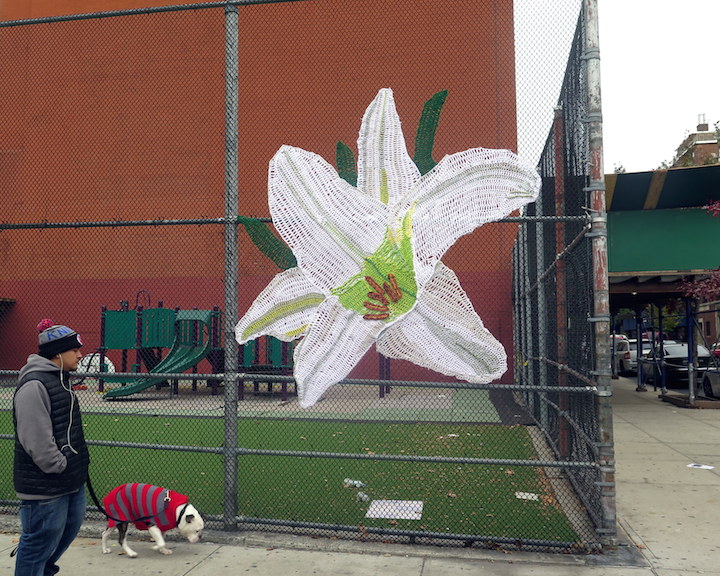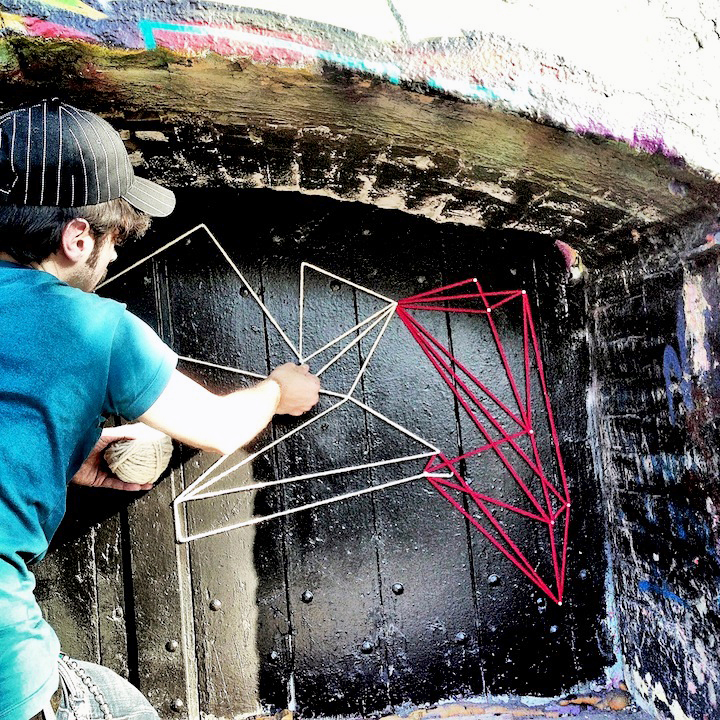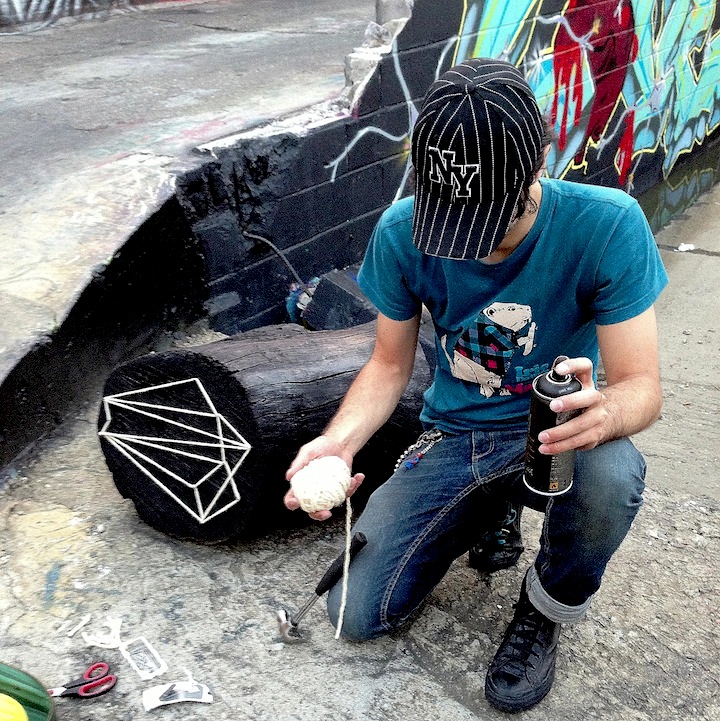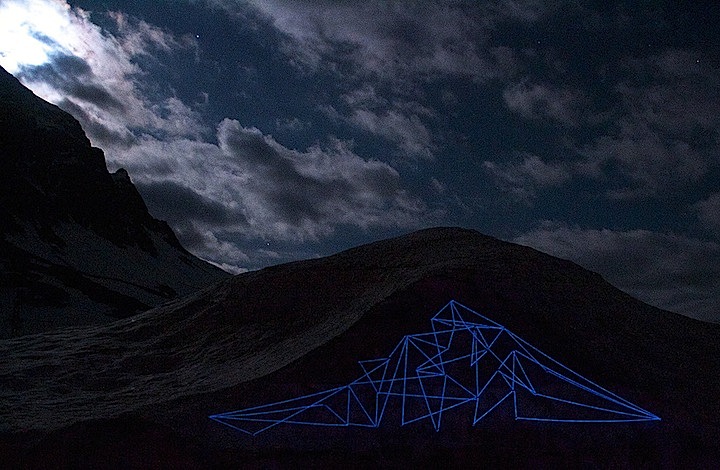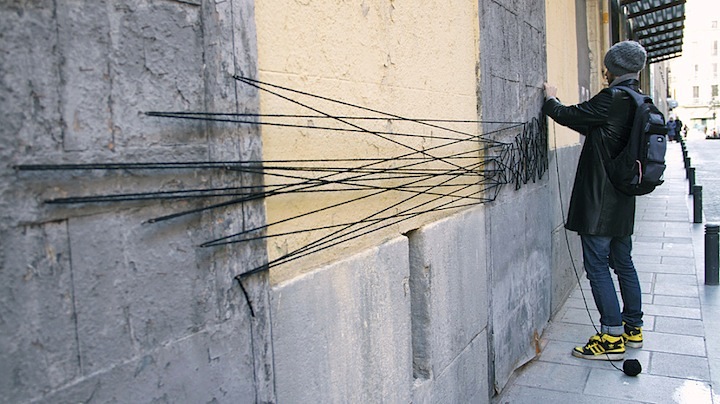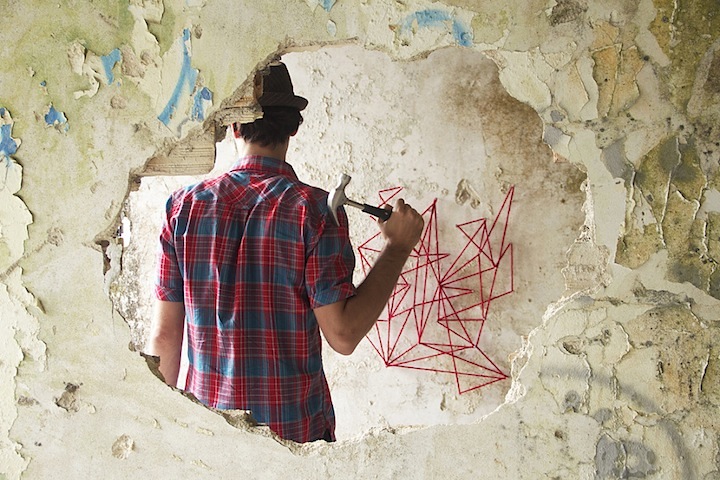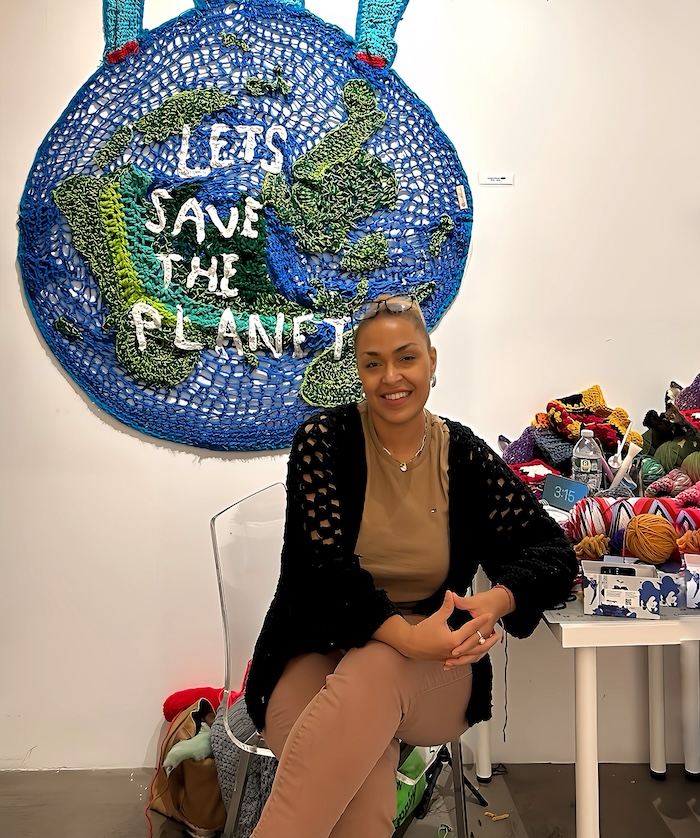
I first noticed Carmen Paulino‘s tantalizing talents several years ago when I came upon her distinct yarn-bombing street art in my Upper West Side neighborhood and in East Harlem. I was mesmerized! Carmen is now sharing her scintillating skills, soulful spirit and boundless passion with visitors to Art on the Ave’s Creative Space at 812 Lexington Avenue on Manhattan’s Upper East Side. On my recent visit, I had the opportunity to pose a few questions to her at her solo exhibition “Stitch Theory.”
This is so wonderful! How did it happen? What a perfect space for a solo exhibition!
I’d worked with Barbara Anderson, the cofounder of Art on the Ave, back in 2020. Art on the Ave transforms vacant storefronts into galleries, providing us local artists with the opportunity to exhibit and share our artwork, while actively engaging with the community at large. And in the early days of the Covid pandemic, Barbara invited me to participate in a project launched by Art on the Ave in Washington Heights. We continued to stay in contact, and in early November, she invited me share my crocheted artworks at this Lexington Avenue space.
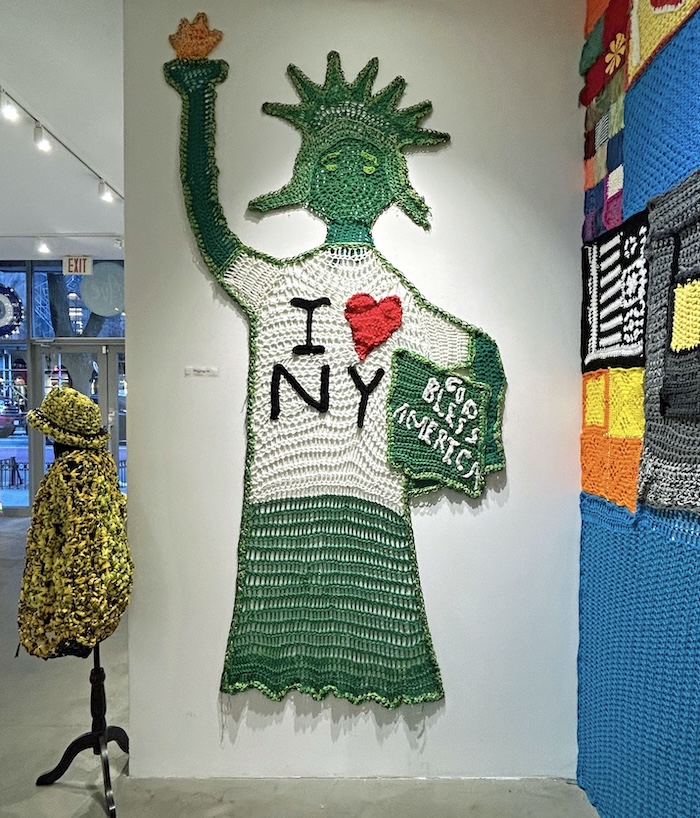
How did you decide what to exhibit?
At the time I was invited, my mind was focused on our natural environment, and I wanted to raise awareness of environmental issues — such as the increase in flooding — that have impacted places dear to me. And so I decided to feature my piece “Let’s Save the Planet,” that had been exhibited at a fiber festival in Brooklyn back in 2019. I also drew on current events — such as the infamous Art Basel banana — and a range of themes that are particularly relevant to me and my community. And, of course, I want to get the message out that “Anything Is Possible,” and that just about anyone — of any age — can learn how to crochet and love doing it.
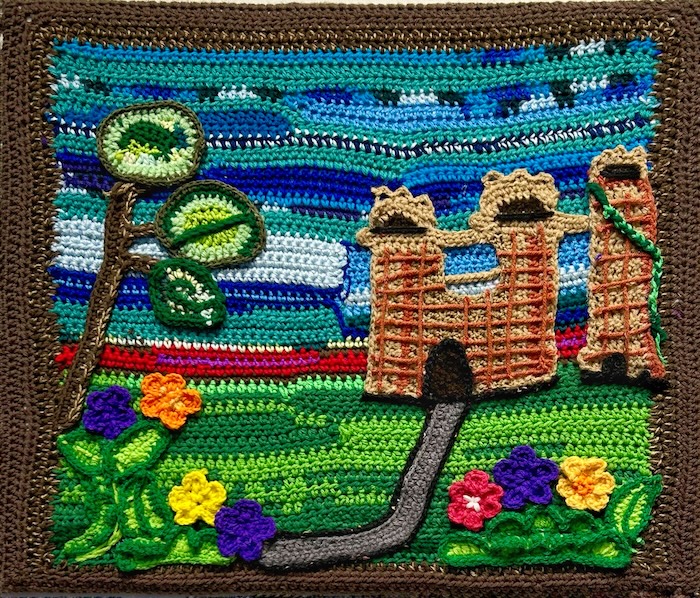
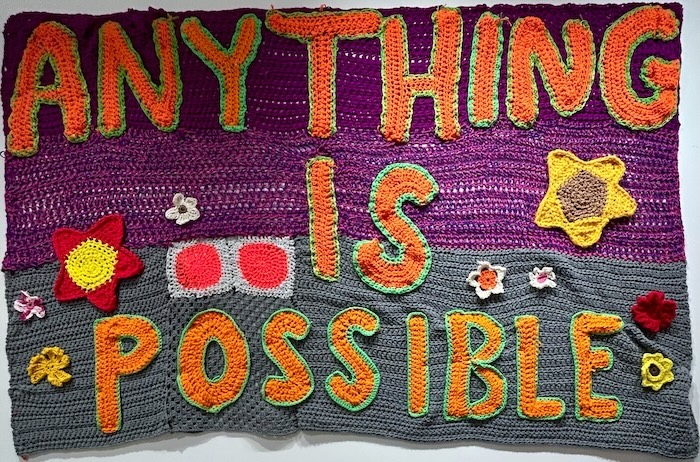
What has the experience of exhibiting in this space been like for you?
It is a dream come true! It’s mind-blowing and humbling. And it brings me one step closer to my goal of blurring the line between yarn bombing and fine art. I participated last year in the Metropolitan Museum’s MetFest, but that was only for one day. It would be wonderful to see my yarn-bombing, along with the fiber art of other yarn bombers, exhibited inside the museum.
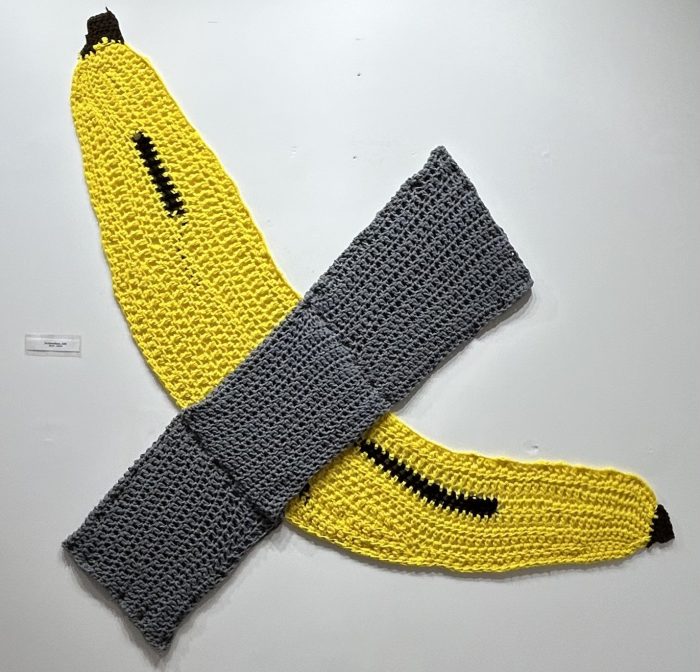
Are there any moments in this particular setting that have stood out to you?
I’ve loved it all. I love interacting with all the folks who pass through. But I especially love when children visit. Earlier this week, a local preschool class of three and four-year olds came by. What a joy watching them interact with my yarn art! They were particularly delighted by my pink cake and thrilled that they were allowed to touch it.
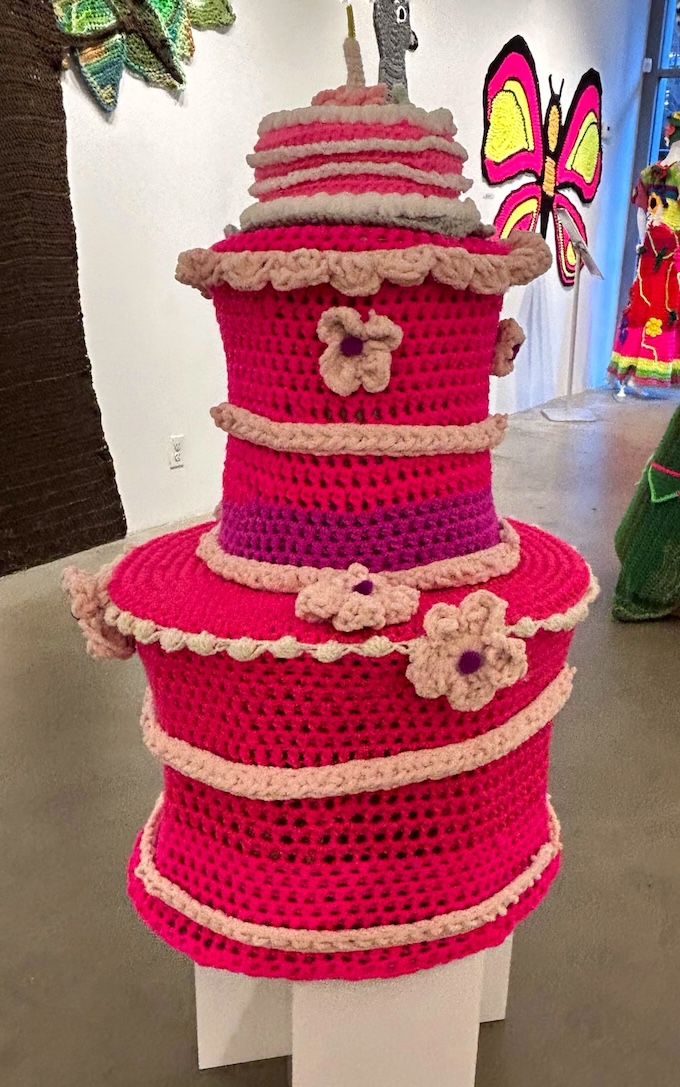
What’s ahead?
As of now, I have several murals coming up, a window I will be decorating, another gallery exhibit I will be hosting and a fashion show I will be working on.
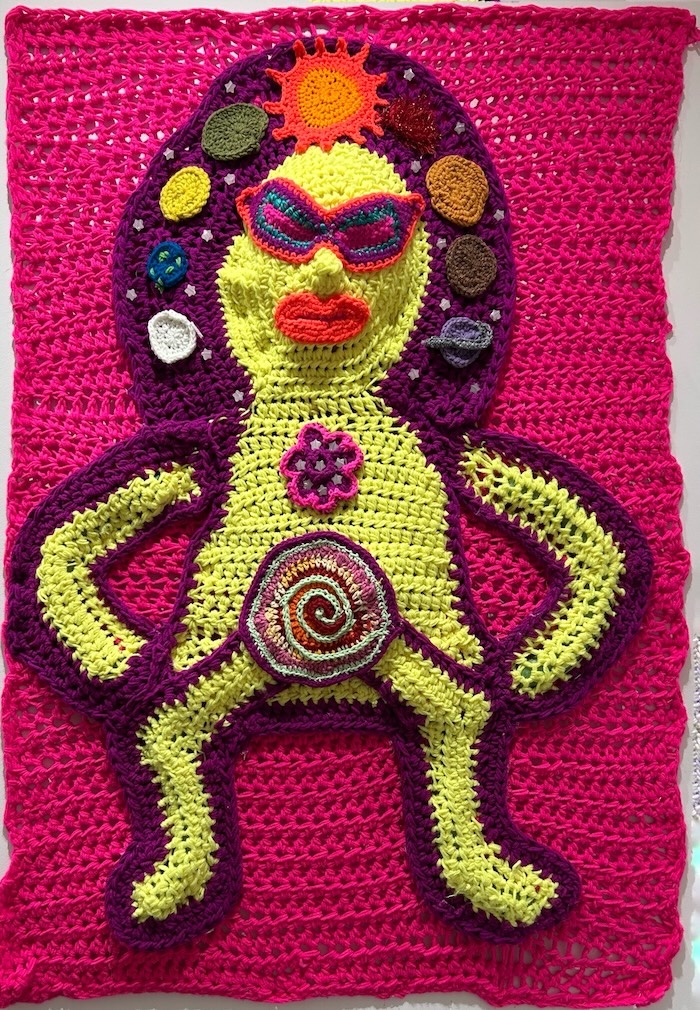
That sounds great! How can folks see this exhibition before it closes on Tuesday?
I will be here at 812 Lexington Avenue — between 62nd-63rd Streets —all day tomorrow, Sunday, and Monday from 9 a.m. until 5 p.m.
Interview conducted and edited by Lois Stavsky; photos, Lois Stavsky
{ 1 comment }
